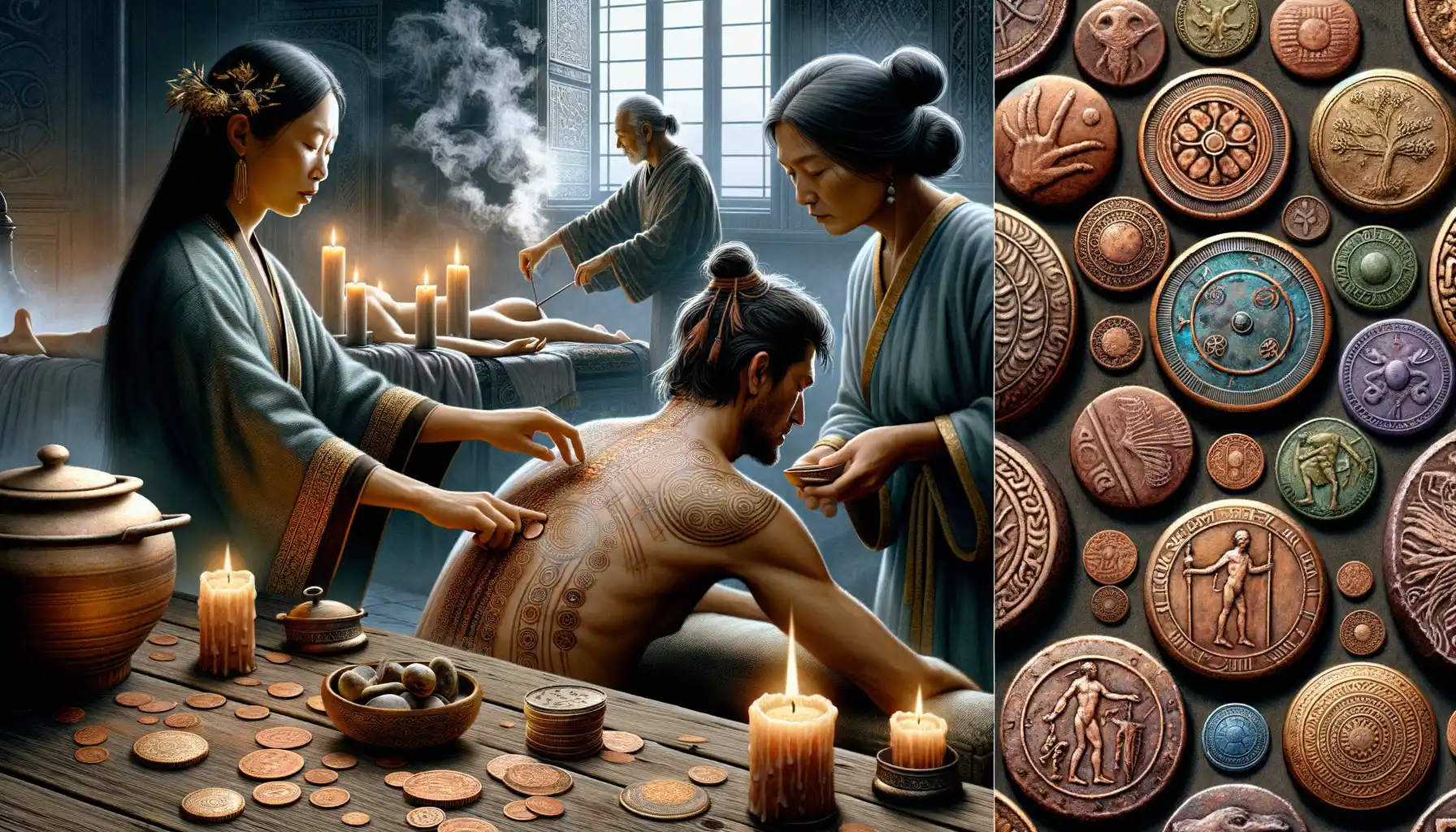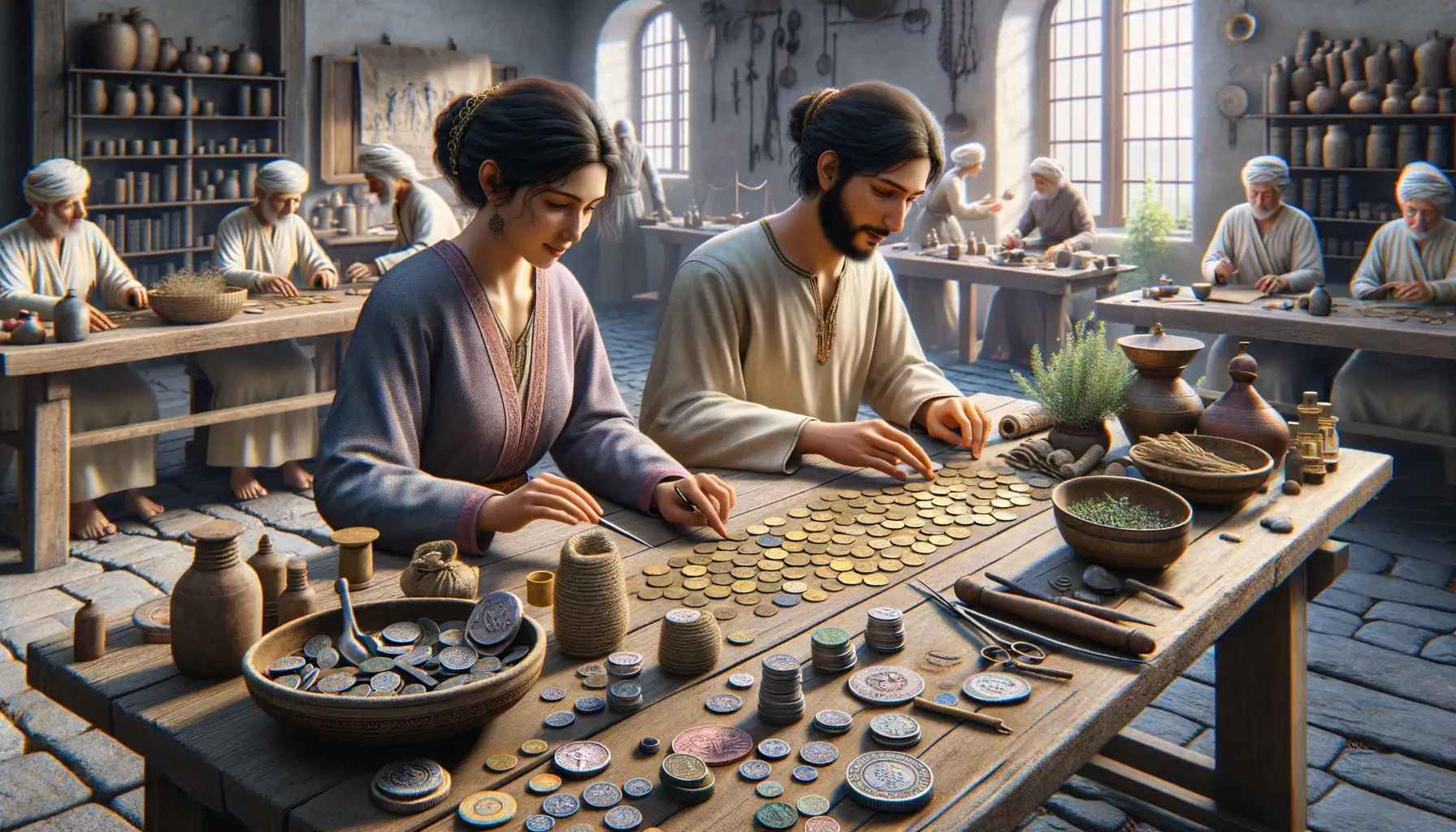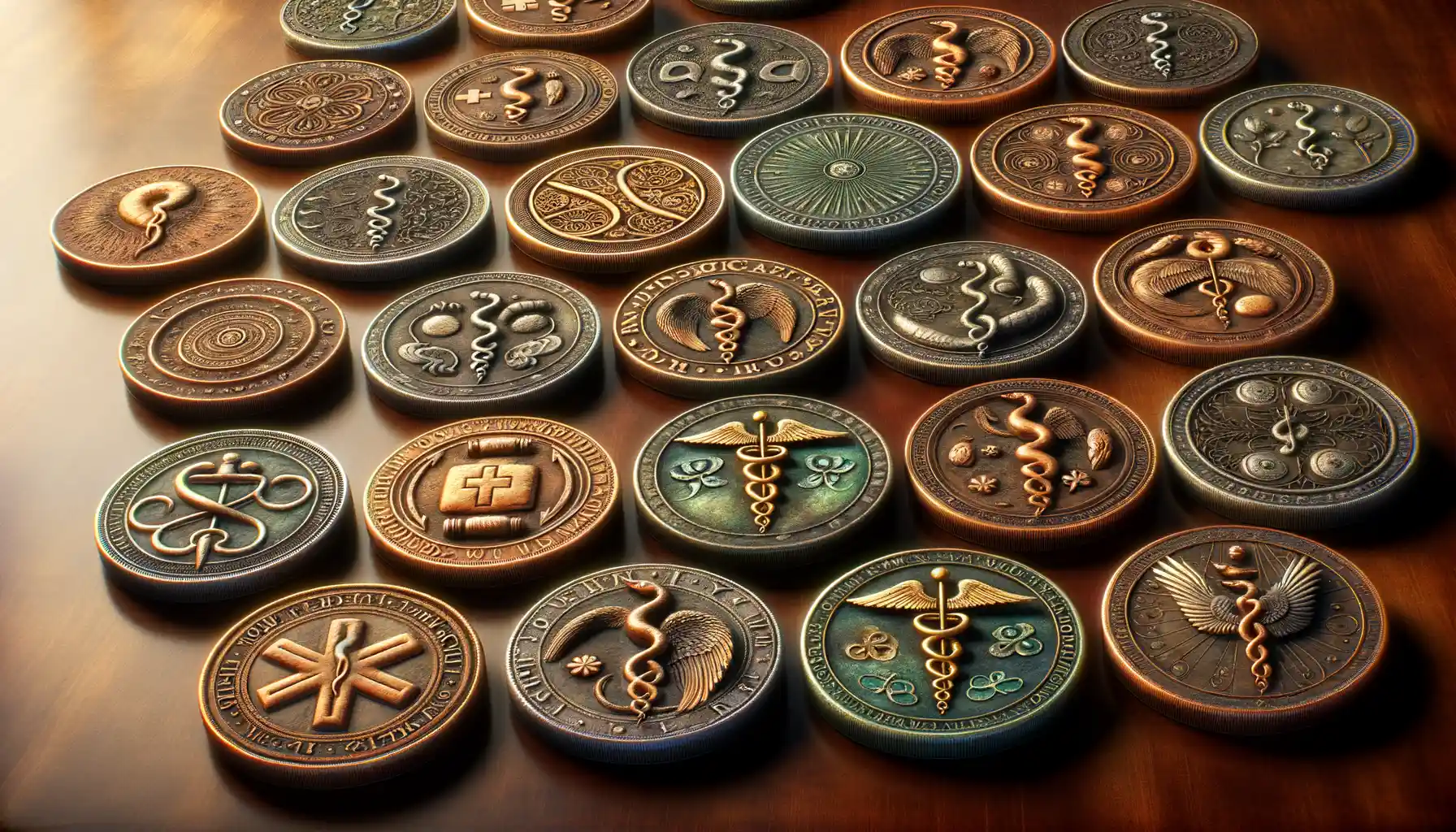Historical Overview of Coins in Ancient Medicine
The Origins: From Charm to Cure
Picture this: a gleaming coin, not as mere currency but as a lifeline. In ancient Greece, Rome, and China, coins carried a significance far beyond trade. They were deeply woven into medical traditions, often seen as vessels of healing powers. Imagine someone clutching a silver drachma, hoping its touch could heal an open wound—this was not superstition, but common practice.
Interestingly, the very metals in coins—gold, silver, and copper—were believed to hold tangible medicinal properties. Copper, for instance, was considered a purifier, used to disinfect water and wounds alike. But it wasn’t just science; symbolism played its part too. A coin etched with a god or goddess? That was no accident. Coins blessed with the image of Aesculapius, the Greek god of medicine, were cherished as talismans of health and recovery.
- The Romans applied heated coins directly on infections, combining physical treatment with spiritual faith.
- Chinese dynasties valued coins with rounded shapes and square holes, reflecting harmony between heaven and earth for healing balance.
Consider how such practices blurred the line between medicine and magic. Just imagine what stories these ancient coins would tell if they could speak!
Cultural Significance of Coins in Healing Rituals

Coins as Tokens of Tradition and Belief
Step into the intricate tapestry of ancient healing traditions, and you’ll find that coins weren’t just pocket change—they were imbued with purpose, belief, and magic. Across cultures, coins held a pivotal role in rituals meant to mend the body and soothe the soul. Why? Because they represented more than their material worth. A coin wasn’t simply metal; it was a carrier of energy, a tangible symbol of exchange between the physical and spiritual realms.
For instance, in ancient Greece, coins were believed to please the gods when placed on altars or under pillows during illness. In Chinese traditions, “Wu Zhu” coins were considered talismans to ward off malevolent spirits. These practices weren’t random; they spoke to a shared human need to trust in objects that felt weighty and enduring—just like healing itself.
- Coins in water rituals: Tossed into sacred wells, coins were thought to infuse the water with divine curative powers.
- Burying coins for protection: Some cultures placed coins near the injured or sick to deflect bad energies.
The jingling of coins wasn’t only heard in marketplaces; it echoed in prayers and whispered hopes for recovery. Can you almost hear it?
Ancient Medical Techniques Utilizing Coins

From Healing Hands to Gleaming Coins
Picture this: a dimly lit room filled with the scent of crushed herbs, and in the center, a healer expertly rubbing a coin on someone’s skin. Sounds unusual? In ancient medical traditions across cultures, coins were not just currency—they were tools of healing, imbued with both symbolic power and practical utility.
One such practice was coin scraping, often used to relieve fevers, muscle tension, or even “bad energy.” The healer would glide the edge of a smooth, cool coin across the skin, creating friction believed to purge toxins or restore balance. It wasn’t just random—specific techniques were passed down through generations.
Coin cupping, a fascinating spin on traditional cupping therapy, involved heating a metal coin and pressing it gently onto aching joints or areas of pain. This process aimed to stimulate blood flow and propel stagnant energy out of the body.
- In China, this evolved into practices like Gua Sha, where coins scraped red marks onto the skin to promote healing.
- In Rome and Greece, gold and silver coins were applied to open wounds, symbolizing purity and aiding recovery.
Simple coins transformed into tiny miracles, every detail laden with intention and care. Just imagine the energy those objects carried—not just metal, but faith imbued within their cool surfaces.
Materials and Symbolism of Ancient Coins in Medicine

The Alchemy of Metals: What Ancient Coins Were Made Of
Imagine holding a coin not just as currency but as a small, shimmering piece of ancient science. The materials of these coins were no accident—they were chosen with intention, even reverence. Metals like gold, silver, and copper were believed to carry mystical and medicinal properties. Gold, for example, wasn’t just a symbol of wealth; it was thought to have divine energy that could invigorate the body. Silver? It gleamed with purity and was used to fend off infections long before we discovered its antimicrobial powers. Copper—rugged, earthy—was seen as a healer, believed to rejuvenate tired muscles and strengthen vitality.
- Gold: Revered for renewing the spirit and enhancing longevity.
- Silver: Trusted for its ability to cleanse and protect against illness.
- Copper: Valued for its grounding, restorative energy.
These metals weren’t just practical; they turned coins into talismans. When pressed against the skin during rituals or dissolved into medicinal potions, their essence was believed to mingle with the human body. Isn’t it extraordinary how something as small as a coin could symbolize both physical healing and cosmic balance?
The Hidden Stories Behind Coin Decorations
But the magic didn’t stop with the materials. The designs etched onto coins spoke volumes about their symbolic power in medicine. Greek drachmas often bore the image of Apollo, god of healing, his sunlit gaze radiating health and harmony. Roman coins featured Asclepius, staff entwined with a serpent—a motif rich with layers of meaning, from rebirth to the cycle of life and death.
Even the mundane details weren’t mundane at all. Some coins had inscriptions invoking blessings or good fortune, transforming them into amulets cherished by healers and patients alike. Picture a sick person clutching a coin carved with sacred imagery, hoping its intricate lines carried a cure. These weren’t just monetary tools; they were pocket-sized prayers, tangible links to divine intervention. And in those moments, who wouldn’t believe in the healing power of symbolism?
Legacy and Modern Reflections on Ancient Practices

From Ancient Healing Hands to Modern Curiosities
Imagine holding a coin, its edges worn smooth by centuries of touch. That same coin might have once been pressed against a feverish forehead or dipped in a medicinal brew to ward off illness. The connection between ancient medical practices and coins isn’t just a relic of the past—it’s an idea that still resonates today.
We often think of modern medicine as sterile and clinical, but there’s something deeply human about the way ancient cultures treated illness. Coins symbolized more than currency; they were tools of healing and symbols of trust. Even now, echoes of these practices linger in surprising ways: like how some believe in the soothing power of copper bracelets for joint pain or how the shimmer of silverware carries whispers of its antimicrobial reputation.
What We’ve Inherited and Innovated
Here’s what’s fascinating: ancient wisdom has subtly woven itself into our present. Consider:
- Copper’s legacy: Its use in everything from hospital surfaces to water purification systems owes much to its ancient medicinal roots.
- Power of symbols: Much like those ancient healing coins, modern wellness is steeped in objects of belief—from crystal amulets to homeopathic remedies.
What’s left is an enduring reflection on the balance between science and symbolism, practicality and mysticism. Somehow, across all these years, ancient coins continue to remind us of the profound ways humans seek healing.
